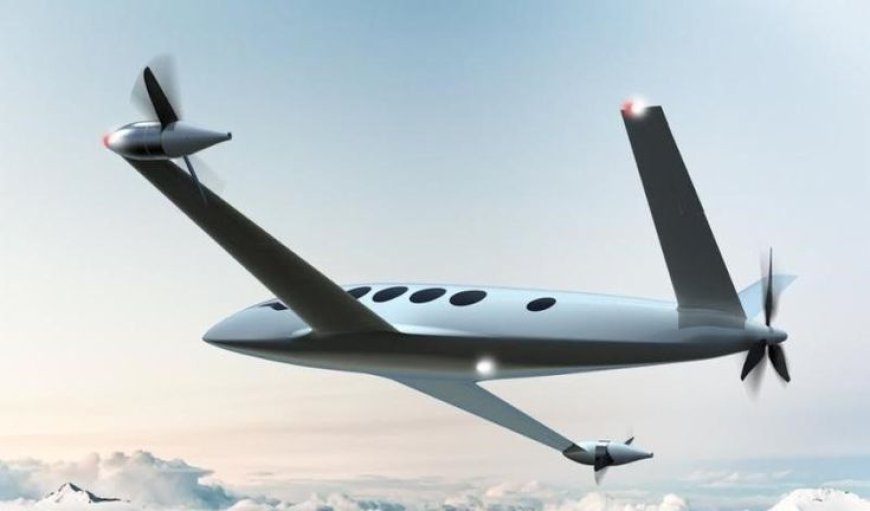Electric Aircraft - The Future of Aviation
This could help electric aircraft penetrate the short-haul market within the next 5-10 years before going fully electric.

Rise of Electric Propulsion Technology
Electric propulsion technology has seen tremendous advancements in recent years due to ongoing research and development in aviation industry. Several companies are developing all-electric and hybrid-electric aircraft prototypes to make commercial aviation more sustainable. Electric motors provide significant benefits over conventional fuel engines as they have less moving parts, require less maintenance and operate more efficiently. Lighter weight of electric motors compared to jet engines also allows increased payload capacity.
Early Prototypes Show Promising Results
Some of the early Electric Aircraft prototypes have already demonstrated the feasibility of replacing jet engines with electric motors. In 2015, Siemens flew a two-seater electric plane called “eFan” which was powered by a 140kW electric motor. It achieved a top speed of nearly 62 mph on a single charge showing that electric aircraft can perform basic functions. In 2017, Pipistrel Aircraft flew the world’s first certified electric plane called “Velis Electro” which flew for 30 minutes on a single charge. Eviation Aircraft is developing an all-electric commuter aircraft “Alice” which is targeted to carry 9 passengers up to 650 miles on a single charge. Such prototypes indicate electric aviation could transform short haul flights in the coming decade.
Challenges in Battery Technology
Despite the advantages, limited energy density of current battery technology poses a major challenge for aircraft to rival the range of conventional jetliners. Aircraft batteries require high power output as well as energy density to achieve comparable flight durations. Lithium-ion batteries which are commonly used provide only half the energy density of jet fuel. Engineering solutions like adding additional battery packs and optimizing aerodynamics can help but cannot overcome the fundamental energy limits. Ongoing R&D is exploring new battery chemistries like lithium-sulfur and solid-state batteries that promise to double or triple energy density in the next 10 years. Overcoming battery constraints is critical to make electric aircraft a viable long-haul solution.
Hybrid Concepts - A Practical Step Forward
To transition effectively from fossil fuels, hybrid-electric configurations combining fuel-cells or generators with electric propulsion provide a practical intermediate solution. Companies are developing hybrid-electric commuter aircraft prototypes that rely on generators to charge batteries during flight extending the range. For example, magniX is powering a seaplane and cargo aircraft prototypes with 750 hp electric motors assisted by generators. Airbus is evaluating hybrid-electric designs for its new urban air taxi project “Vahana”. By splitting energy sources, hybrid aircraft can achieve trip lengths essential for commercial viability until battery technology advances further. This could help electric aircraft penetrate the short-haul market within the next 5-10 years before going fully electric.
Advancing Sustainability Goals
As governments aim for “net-zero carbon emissions by 2050”, electric aviation holds potential to significantly reduce carbon footprint of the airline industry which accounts for 2-3% of global emissions currently. Electric planes emit zero direct emissions and can be charged using renewable energy. This helps aviation align better with climate targets. Furthermore, electric motors eliminate noise from jet engines making urban air transport more conducive for densely populated cities. Gradual introduction of electric aircraft for short haul services complemented by sustainably produced bio-jet fuels or synthetic fuels for long flights can put aviation on a cleaner development pathway. Cutting carbon emissions and noise pollution would boost electric aircraft's social and political acceptance over the long run as a revolutionary innovation in sustainable aviation.
For Deeper Insights, Find the Report in the Language that You want:
About Author:
Money Singh is a seasoned content writer with over four years of experience in the market research sector. Her expertise spans various industries, including food and beverages, biotechnology, chemical and materials, defense and aerospace, consumer goods, etc. (https://www.linkedin.com/in/money-singh-590844163)

 vaishnavicmi
vaishnavicmi